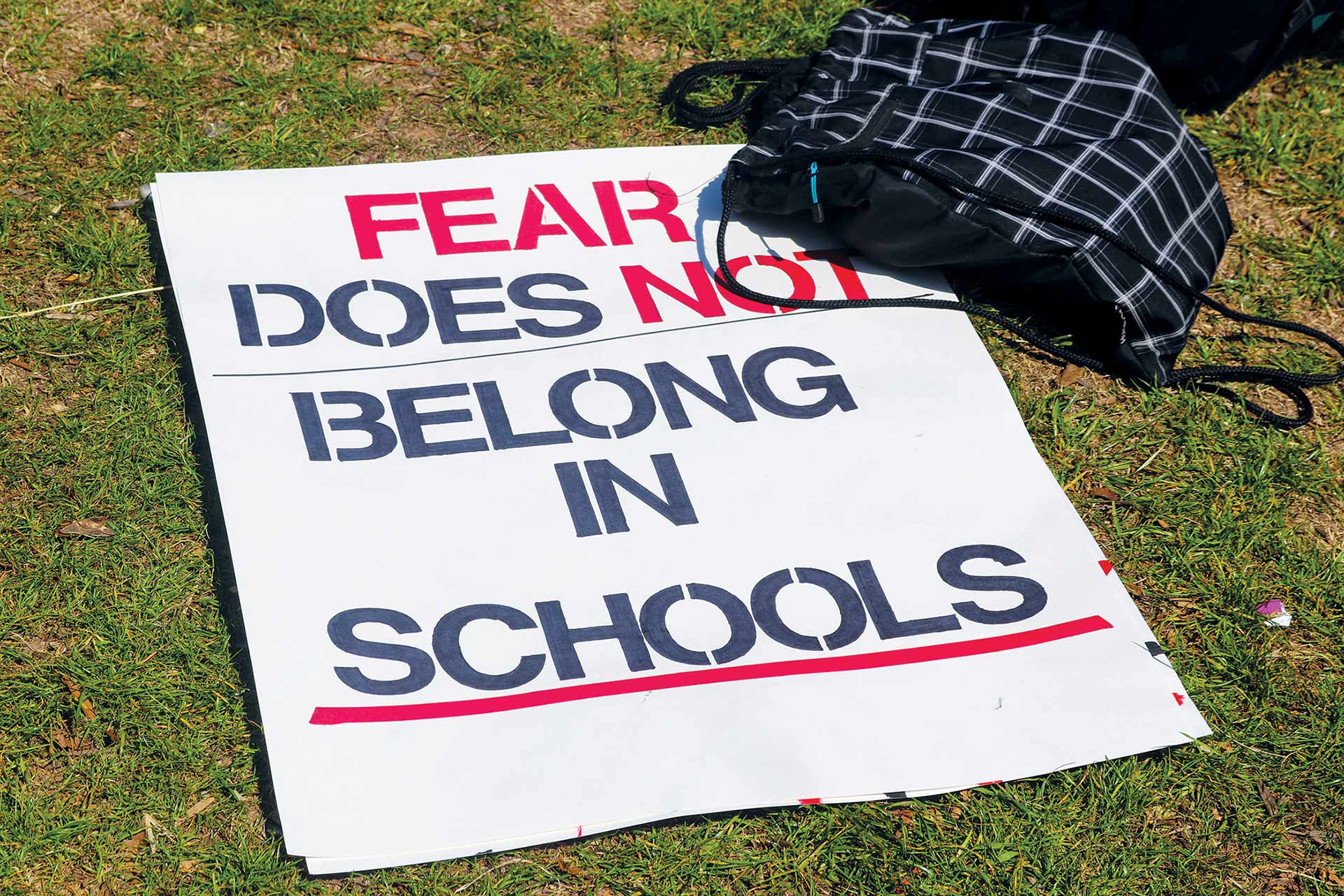
Law enforcement officers play a key role in supporting kindergarten to 12th grade (K–12) schools in preparing for a critical violent incident on campus. The role of officers may vary by jurisdiction, with some states mandating that public schools collaborate with their local law enforcement agencies in this area. Officers may find themselves reviewing and advising on school safety plans, conducting vulnerability assessments, training staff in active shooter response or observing lockdown/active shooter drills.
For most educators, law enforcement are considered the default experts in preparing staff and students for an active threat. While most officers are well-versed in how police and EMS will respond to an active shooter event, they are not familiar with the appropriate techniques for training staff and students. What is the root of the problem? Officers are trying to train teachers and students in the same manner they would train fellow officers. Don’t believe me? Here are just a few examples of incidents that made national headlines: Indiana deputies shot elementary school teachers point-blank with airsoft guns. Florida deputies fired blanks during a lockdown drill to simulate gunfire. An Oregon elementary teacher had a gun pointed in her face by a masked man during training. An Ohio teacher was tackled and injured by a law enforcement officer during an exercise. A California school custodian wore a mask and carried a fake gun during a lockdown drill.
What is the root of the problem? Officers are trying to train teachers and students in the same manner they would train fellow officers.
These and other incidents have cost police departments and school districts hundreds of thousands of dollars in lawsuits. Worse yet, the trust and confidence of the community in the local police agency to effectively support schools is lost. This has manifested in some organizations calling for an end to active shooter drills and some states exploring legislation that prohibits certain training practices, such as the use of simunitions, in schools.
How can officers appropriately support K–12 schools in preparing for the unthinkable? With the use of trauma-informed training practices. Trauma-informed means officers do everything in their power to avoid inserting trauma into training or drills. It also means officers have the emotional intelligence to recognize that they may inadvertently trigger a negative emotional or psychological response in staff or students because of previous exposure to trauma. As officers, we cannot account for how every stakeholder will respond during training; however, we do have a legal and ethical responsibility to mitigate risks. Here are three changes officers can make right now to utilize trauma-informed practices when supporting K–12 schools in training staff and conducting active shooter drills.
Stop running unannounced drills
The idea behind unannounced drills is that administrators and law enforcement can observe how staff and students will most likely respond during an emergency. Observers get to witness, and stakeholders experience, an “authentic” reaction. With authenticity comes fear, anxiety and, you guessed it, trauma. Staff and students should always be given advance notice of when a drill will be conducted. The primary purpose is to reduce anxiety that this is a real event and not just a drill. This also gives teachers an opportunity to have age-appropriate discussions with their students and adjust their instructional time around the drill. As the school year progresses, trainers can provide stakeholders with a general time frame of when the drill will occur. For example, if a school conducts nine drills in a year, staff and students should be given the exact time and day for the first three drills, the exact day with a time window for the second three drills and the exact day with no time frame for the last three drills. This model mitigates trauma commonly associated with unannounced drills while also allowing trainers to progressively build toward observing a realistic response.
Announcement should differ between drills and emergencies
Many times, staff and students are unsure whether or not a drill is actually a drill. This is because of a lack of clear announcement protocols. There are countless stories of children texting their parents during lockdown drills, believing it was an actual emergency. This creates panic among parents, resulting in many of them flooding the front officer with calls or driving to the school to make sure their kids are safe. Emergency announcements should be clear and concise, and should differentiate between a drill and an emergency. Training should empower all staff with the authority to make emergency announcements and the knowledge of how to use available communication assets. Below is an example of communication protocols for lockdown I recommend for schools:
- Drill: “Drill, drill, drill. This is a lockdown drill. Drill, drill, drill.”
- Emergency: “Lockdown, lockdown, lockdown. This is real. Lockdown, lockdown, lockdown.”
Every emergency would follow the same format, replacing “lockdown” with the given response (e.g., secure campus, lockout, shelter in place). Before the drill, staff should discuss with students what the drill announcement will be and what they would hear during an actual emergency. Not only do these protocols reduce trauma, but they also increase response times during an actual crisis, as stakeholders are not left questioning whether or not this is “just another drill.”

Stop using simulated gunfire
Simunitions, simulated gunfire and other reality-based training techniques are utilized during training and drills in order to induce stress, with the hopes of achieving some level of stress inoculation among participants. Let me phrase that another way: We are knowingly and intentionally exposing staff and students to trauma! I want to be clear — the use of reality-based training techniques comes from a sincere place of officers wanting to prepare schools for the actuality of a targeted attack. Studies suggest that tying curriculum to an emotional anchor can increase memory recall, especially during a crisis. Reality-based training is a powerful tool to jump-start myelination and increase response times during an emergency. But at what cost?
Simply put, these training techniques have no place in school active shooter drills or training staff. The only exception would be a staff-only opt-in training where participants are fully aware of what the training entails and can stop at any time. Some of the greatest setbacks in school safety reform have been caused by officers trying to do the right thing but inadvertently doing more harm than good. While reality-based training and simulations should be a staple in training law enforcement, those same techniques are not appropriate for staff and students. Officers should conduct a thorough risk assessment before introducing any form of reality-based training to K–12 schools.
Law enforcement officers are valuable assets for K–12 schools. Officers provide guidance and expertise in preparing staff and students to respond to an active threat on campus. Law enforcement partners often become focused on the physical protection of stakeholders during a critical event and fail to realize their role in emotionally and psychologically protecting stakeholders during training. When supporting K–12 schools in preparing for an active shooter event, officers should understand the principles of trauma-informed practices. Law enforcement should be aware of how certain training techniques increase fear or anxiety among staff and students or may be a trigger for previous trauma. Officers should collaborate with school administrators, educators, counselors, psychologists and social workers to design trauma-informed training and drills.
As seen in the May 2022 issue of American Police Beat magazine.
Don’t miss out on another issue today! Click below:






